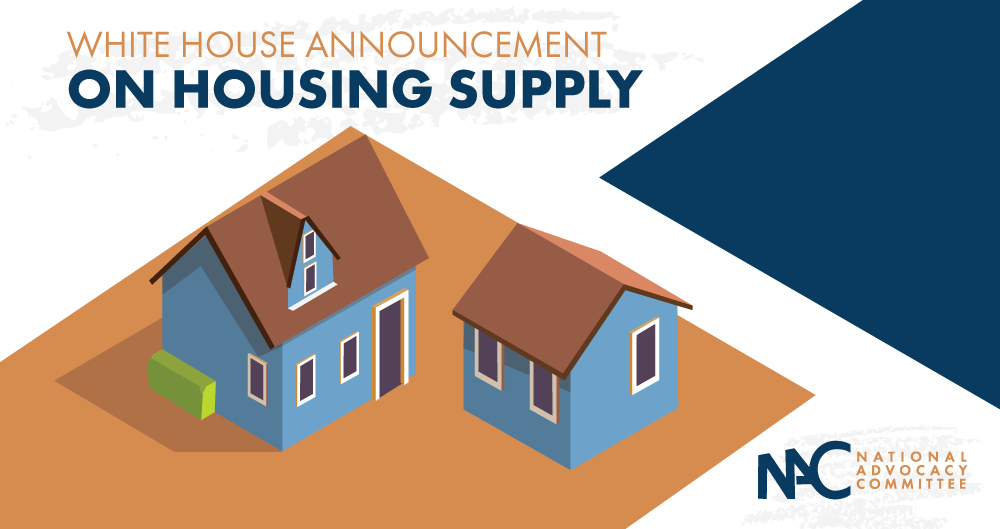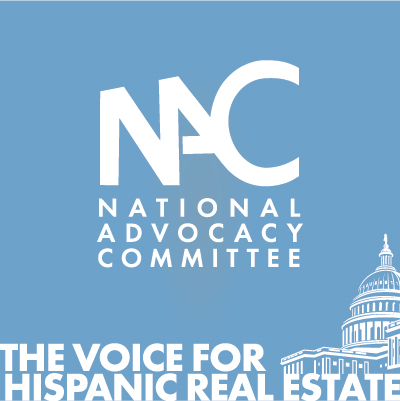White House announcement on housing supply
Celebrating NAHREP familia, cultura, politics, and grassroots action
September 9, 2021
Qué onda mi gente?!
It’s not too often that we have a week of good news when it comes to our housing inventory shortage. For a long time it felt like we were budding up against a brick wall and nothing was moving. It looks like something is finally beginning to move. Last week, I highlighted some of the zoning changes that came out of California, this week, I’m breaking down a big announcement that came out of the White House.

The White House takes steps to address the housing shortage
So, it’s about time the Federal Government got involved. Here is what they are proposing:
- Make better use of existing funding: The Department of Housing and Urban Development (HUD) will create a Housing Supply Toolkit that will provide easy-to-implement strategies for cities and states to use existing grants and resources to address housing supply. HUD will bring together these groups so they can share ideas and accelerate their efforts. As a part of this effort, the Federal Government will encourage cities and states to use part of the $350 billion in funding provided to them through the American Rescue Plan for affordable housing development and preservation – something 42 cities and 33 states are already working on.
- Work to reduce exclusionary zoning: The Federal Housing Finance Administration (FHFA) will conduct a study to see what percentage of conventional loans go to communities with restrictive zoning and how that impacts communities of color. This data will be used to help support localities in enacting more inclusionary zoning policies.
- Ensuring homes go to individuals and families as opposed to large investors: You all remember this after the housing crisis. Investors just swept up homes that had previously belonged to communities of color. I’ve heard from many of you that we should be advocating for a “first look” type of deal in today’s environment. Well, this is kind of like that.
- Second Chance Claims Without Conveyance of Title (CWCOT): Through this program, servicers can sell their FHA-insured foreclosed homes directly to third parties, without conveying them to HUD, and still get their claim paid by FHA – reducing costs for taxpayers. However, these sales typically go to large investors. Now HUD will provide an exclusive listing period for governmental entities, non-profits, and owner occupant only for one full year.
- Promoting the Sale of Distressed HUD Properties to Non-Profits: HUD will be selling more than 1,700 distressed single-family mortgage notes from defaulted FHA-insured properties this fall. For this sale, HUD is exploring earmarking half of these for non-profits and community organizations that commit to rehabilitating and selling the related properties to owner occupants or creating other positive outcomes for the communities. In the past, only 10% of these sales typically go to non-profits.
- Expanding the exclusivity period for FHA and Conventional REO sales: To help more potential owner-occupants purchase these properties, Fannie Mae, Freddie Mac, and FHA will extend their existing “first look” periods to 30 days for all available REO properties, up from the current 10 - 20 day periods.
- Outreach and education for non-profits and community organizations: HUD will provide virtual note sales educational seminars around HUD’s upcoming fall single-family note sale and the GSE’s will advance existing partnerships with non-profits focused on owner occupancy and neighborhood stabilization to complement the retail disposition of their REO properties.
- Creating more opportunities for upzoning: With California recently deciding to move toward making it legal to build up to 4 units in each lot if a homeowner wants to, there has been a lot of talk about increasing the supply of 2-4 unit properties, and making sure financing is available. FHFA has authorized Freddie Mac to revisit mortgage eligibility requirement changes made in 2020 for 2-4 unit properties, reducing financing options.
Un abrazo!

About Noerena Limón
Noerena Limón is NAHREP’s Executive Vice President of Public Policy and Industry Relations. Noerena heads the organization’s policy and advocacy efforts on issues ranging from homeownership, housing inventory, credit access and immigration.
Prior to joining NAHREP, Noerena spent six years at the Consumer Financial Protection Bureau (CFPB) and served as a political appointee under President Obama in the White House Office of Political Affairs.



